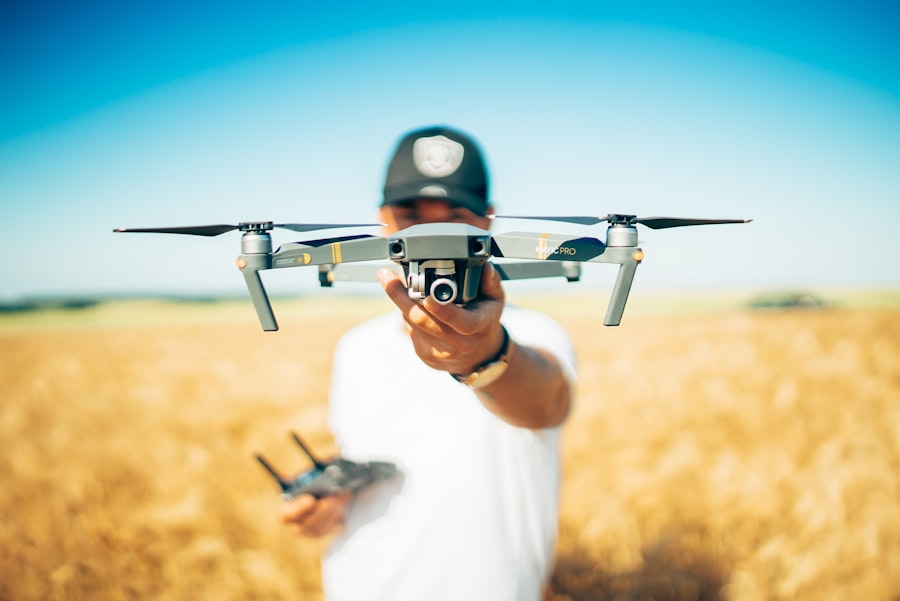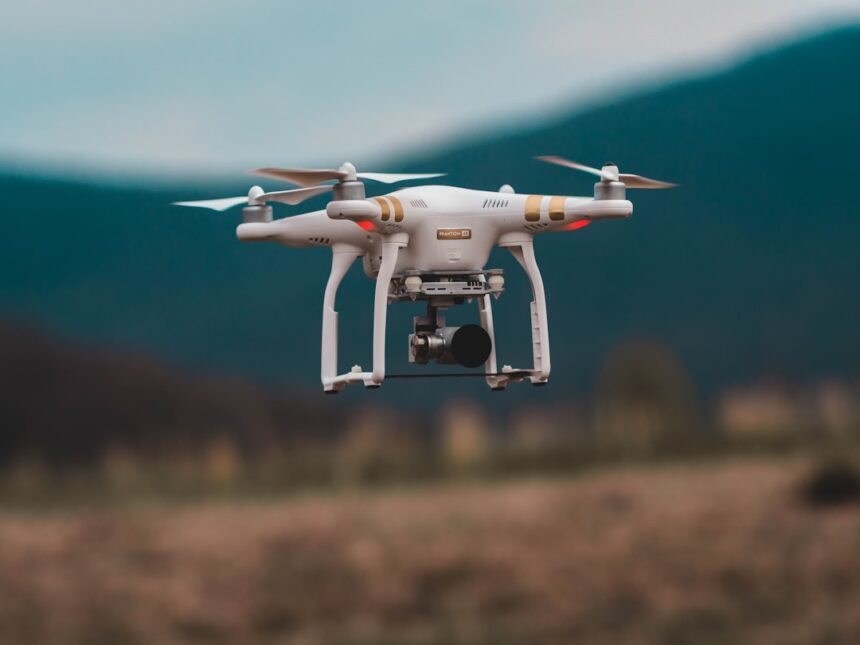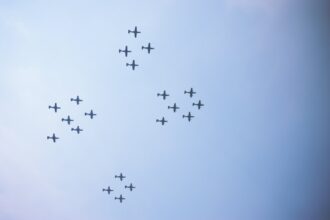In recent years, drone technology has experienced an unprecedented surge in popularity and capability, transforming various sectors and reshaping the landscape of modern technology. Initially developed for military reconnaissance and surveillance, drones have evolved into versatile tools that serve a multitude of purposes. The proliferation of affordable consumer drones has made them accessible to hobbyists, photographers, and businesses alike, leading to a burgeoning market that continues to expand.
This rise can be attributed to advancements in battery life, miniaturization of components, and improvements in navigation systems, which have collectively enhanced the functionality and reliability of these unmanned aerial vehicles (UAVs). The increasing integration of drones into everyday life has sparked a revolution in how people perceive aerial technology. From delivering packages to capturing breathtaking aerial footage, drones have become synonymous with innovation.
The rapid development of drone technology has not only democratized access to aerial capabilities but has also spurred interest in related fields such as robotics, artificial intelligence, and data analytics. As industries recognize the potential benefits of incorporating drones into their operations, the demand for skilled professionals in drone technology is on the rise, further solidifying its place in the future of technological advancement.
Key Takeaways
- Drone technology has rapidly advanced in recent years, leading to a wide range of applications in both military and commercial sectors.
- Drones have revolutionized military operations, providing surveillance, reconnaissance, and targeted strikes with unprecedented precision and efficiency.
- Commercial use of drones has expanded to include delivery services, agriculture, filmmaking, and infrastructure inspection, among other applications.
- The impact of drones on warfare has raised ethical concerns regarding civilian casualties, privacy violations, and the potential for autonomous decision-making in combat situations.
- The role of artificial intelligence in drone technology is a growing area of interest, with AI being used to enhance autonomous capabilities and decision-making processes.
Military Applications of Drones
The military sector was among the first to harness the potential of drone technology, utilizing UAVs for surveillance, reconnaissance, and targeted strikes. Drones have revolutionized modern warfare by providing real-time intelligence and reducing the risk to human life during combat operations. The ability to conduct missions without putting pilots in harm’s way has made drones an invaluable asset for military strategists.
They can be deployed in hostile environments where manned aircraft would face significant danger, allowing for greater operational flexibility and efficiency. Moreover, the precision with which drones can strike targets has changed the dynamics of warfare. Armed drones equipped with advanced targeting systems can engage enemy positions with remarkable accuracy, minimizing collateral damage and civilian casualties.
This capability has led to a shift in military tactics, as commanders increasingly rely on drone strikes to achieve strategic objectives. However, the reliance on drones also raises questions about accountability and the ethical implications of remote warfare, as decisions about life and death are made from thousands of miles away.
Commercial Use of Drones

Beyond military applications, drones have found a wide array of commercial uses that are transforming industries such as agriculture, construction, and logistics. In agriculture, farmers are employing drones to monitor crop health, assess irrigation needs, and optimize pesticide application. By providing detailed aerial imagery and data analysis, drones enable farmers to make informed decisions that enhance productivity and sustainability.
This technological integration not only increases yields but also promotes environmentally friendly practices by reducing chemical usage. In the construction industry, drones are being utilized for site surveys, progress monitoring, and safety inspections. Their ability to capture high-resolution images and generate 3D models allows project managers to track developments in real-time and identify potential issues before they escalate.
Additionally, logistics companies are exploring the use of drones for last-mile delivery services, aiming to streamline operations and reduce delivery times. As businesses continue to recognize the efficiency and cost-effectiveness of drone technology, its commercial applications are expected to expand even further.
The Impact of Drones on Warfare
| Aspect | Impact |
|---|---|
| Surveillance | Enhanced reconnaissance and intelligence gathering capabilities |
| Targeted Strikes | Precision targeting of enemy combatants and infrastructure |
| Civilian Casualties | Potential for unintended civilian casualties and collateral damage |
| Psychological Impact | Instills fear and uncertainty among enemy forces |
| Ethical Concerns | Raises ethical questions about remote warfare and decision-making |
The introduction of drones into warfare has fundamentally altered the nature of conflict. Traditional battlefields have transformed into complex environments where unmanned systems play a pivotal role in shaping outcomes. Drones provide unparalleled situational awareness, allowing military forces to gather intelligence without exposing personnel to danger.
This shift has led to a more strategic approach to warfare, where information dominance is as crucial as firepower. However, the impact of drones on warfare extends beyond tactical advantages. The psychological effects on both combatants and civilians cannot be overlooked.
For soldiers operating drones from remote locations, the detachment from the battlefield can lead to a different kind of psychological toll compared to traditional combat experiences. On the other hand, civilians living in conflict zones may experience heightened anxiety and fear due to the constant presence of drones overhead. This new reality raises important questions about the long-term consequences of drone warfare on societies and the ethical responsibilities of those who wield such power.
The Ethics of Drone Warfare
The ethical implications of drone warfare are a topic of intense debate among scholars, policymakers, and military leaders. One of the primary concerns revolves around accountability—who is responsible for decisions made by drone operators? The distance between operators and targets can create a disconnect that complicates moral judgments about the use of lethal force.
Critics argue that this detachment may lead to a desensitization towards violence and a diminished sense of responsibility for civilian casualties. Furthermore, the use of drones raises questions about sovereignty and international law. Strikes conducted in foreign nations without explicit consent can be seen as violations of territorial integrity.
The potential for misuse or overreach by powerful nations adds another layer of complexity to the ethical discourse surrounding drone warfare. As technology continues to advance, it is imperative for governments and international organizations to establish clear guidelines that address these ethical dilemmas while ensuring accountability and transparency in military operations.
The Role of Artificial Intelligence in Drone Technology

Artificial intelligence (AI) is playing an increasingly significant role in enhancing drone capabilities, enabling them to perform complex tasks autonomously. AI algorithms allow drones to analyze vast amounts of data in real-time, improving decision-making processes during missions. For instance, AI-powered drones can identify targets based on pre-defined criteria or adapt their flight paths in response to changing environmental conditions.
This level of autonomy not only increases operational efficiency but also reduces the cognitive load on human operators. Moreover, the integration of AI into drone technology raises important questions about safety and reliability. As drones become more autonomous, ensuring that they operate within ethical boundaries becomes paramount.
The potential for AI-driven drones to make life-and-death decisions without human intervention poses significant risks if not properly regulated. Striking a balance between leveraging AI’s capabilities and maintaining human oversight will be crucial as the technology continues to evolve.
The Race for Drone Supremacy
As nations recognize the strategic advantages offered by drone technology, a race for supremacy has emerged on the global stage. Countries are investing heavily in research and development to enhance their drone capabilities, leading to an arms race that mirrors historical competitions for military dominance. This pursuit is not limited to traditional superpowers; emerging economies are also seeking to develop their own drone technologies to bolster national security and assert their influence.
The competition extends beyond military applications; nations are vying for leadership in commercial drone markets as well. The potential economic benefits associated with drone technology—ranging from job creation to increased efficiency—have prompted governments to prioritize investment in this sector. As countries strive for technological superiority, collaboration between private industry and government entities will play a crucial role in shaping the future landscape of drone technology.
Government Regulations and Oversight of Drones
With the rapid proliferation of drones comes the need for effective government regulations and oversight to ensure safety and security. Many countries have begun implementing frameworks that govern drone usage across various sectors, addressing concerns related to privacy, airspace management, and public safety. These regulations often require drone operators to obtain licenses, adhere to specific flight paths, and comply with restrictions regarding altitude and proximity to populated areas.
However, striking a balance between fostering innovation and ensuring public safety remains a challenge for regulators. Overly restrictive regulations may stifle technological advancement and hinder commercial opportunities, while lax oversight could lead to accidents or misuse of drone technology. As the industry continues to evolve, ongoing dialogue between stakeholders—including government agencies, industry leaders, and advocacy groups—will be essential in developing effective policies that promote responsible drone usage.
The Future of Drone Technology
The future of drone technology holds immense promise as advancements continue to reshape its capabilities and applications. Innovations such as improved battery technology, enhanced sensors, and advanced AI algorithms are expected to drive further developments in both military and commercial sectors. As drones become more sophisticated, their potential uses will expand beyond current applications, paving the way for new industries and services.
One area poised for significant growth is urban air mobility (UAM), where drones could play a vital role in alleviating traffic congestion through aerial transportation solutions. Companies are actively exploring concepts such as passenger drones and cargo delivery systems that operate within urban environments. As cities grapple with increasing populations and transportation challenges, integrating drones into urban infrastructure may offer viable solutions that enhance mobility while reducing environmental impact.
The Global Arms Race for Drone Technology
The global arms race for drone technology is intensifying as nations seek to secure their positions in an increasingly competitive landscape. Countries are not only investing in developing advanced military drones but are also focusing on enhancing their defensive capabilities against potential threats posed by adversarial UAVs. This arms race is characterized by rapid technological advancements that blur the lines between traditional military power and emerging technologies.
As nations strive for dominance in drone capabilities, concerns about proliferation arise. The transfer of drone technology between countries can lead to destabilization if rogue states or non-state actors gain access to advanced systems. International cooperation will be essential in establishing norms and agreements that govern the development and deployment of drone technology while mitigating risks associated with its proliferation.
The Potential Dangers of Drone Proliferation
The proliferation of drone technology presents several potential dangers that warrant careful consideration from policymakers and society at large. One significant concern is the risk of drones being used for malicious purposes by terrorist organizations or criminal enterprises. The accessibility of commercial drones makes it easier for individuals with nefarious intentions to exploit this technology for surveillance or attacks.
Additionally, as more countries develop their own drone capabilities, the likelihood of conflicts arising from misunderstandings or miscalculations increases. The presence of armed drones in volatile regions can escalate tensions between nations or factions, leading to unintended consequences that may spiral out of control. To address these challenges effectively, international dialogue and cooperation will be crucial in establishing frameworks that promote responsible use while preventing misuse or escalation associated with drone proliferation.
In conclusion, while drone technology offers remarkable opportunities across various sectors—from military applications to commercial uses—it also presents complex challenges that must be navigated thoughtfully. As society moves forward into an era defined by UAVs, it is imperative that stakeholders engage in meaningful discussions about ethics, regulations, and safety measures that will shape the future landscape of this transformative technology.
In the rapidly evolving landscape of modern warfare, the emergence of drones has sparked what many are calling a new arms race. These unmanned aerial vehicles are transforming military strategies and capabilities across the globe. For a deeper dive into the implications of this technological shift, you might find the article on In The War Room insightful. It explores how nations are adapting to this change and the potential future of drone warfare, providing a comprehensive overview of the current state of military innovation.
FAQs
What are drones?
Drones, also known as unmanned aerial vehicles (UAVs), are aircraft that are operated without a human pilot on board. They can be controlled remotely by a human operator or autonomously by onboard computers.
What is the new arms race involving drones?
The new arms race involving drones refers to the increasing development and deployment of military drones by various countries around the world. This includes the development of advanced drone technology for surveillance, reconnaissance, and combat purposes.
How are drones being used in the arms race?
Drones are being used in the arms race for a variety of purposes, including intelligence gathering, targeted strikes, and aerial surveillance. They are also being developed with advanced capabilities such as stealth, long-range endurance, and autonomous operation.
Which countries are involved in the new arms race drones?
Several countries are involved in the new arms race drones, including the United States, China, Russia, Israel, and various European countries. These countries are investing heavily in the development and deployment of military drones for defense and security purposes.
What are the implications of the new arms race drones?
The new arms race drones has raised concerns about the potential for increased military tensions and conflicts, as well as the ethical and legal implications of using drones for targeted strikes and surveillance. There are also concerns about the potential for drone technology to fall into the hands of non-state actors and terrorist organizations.




